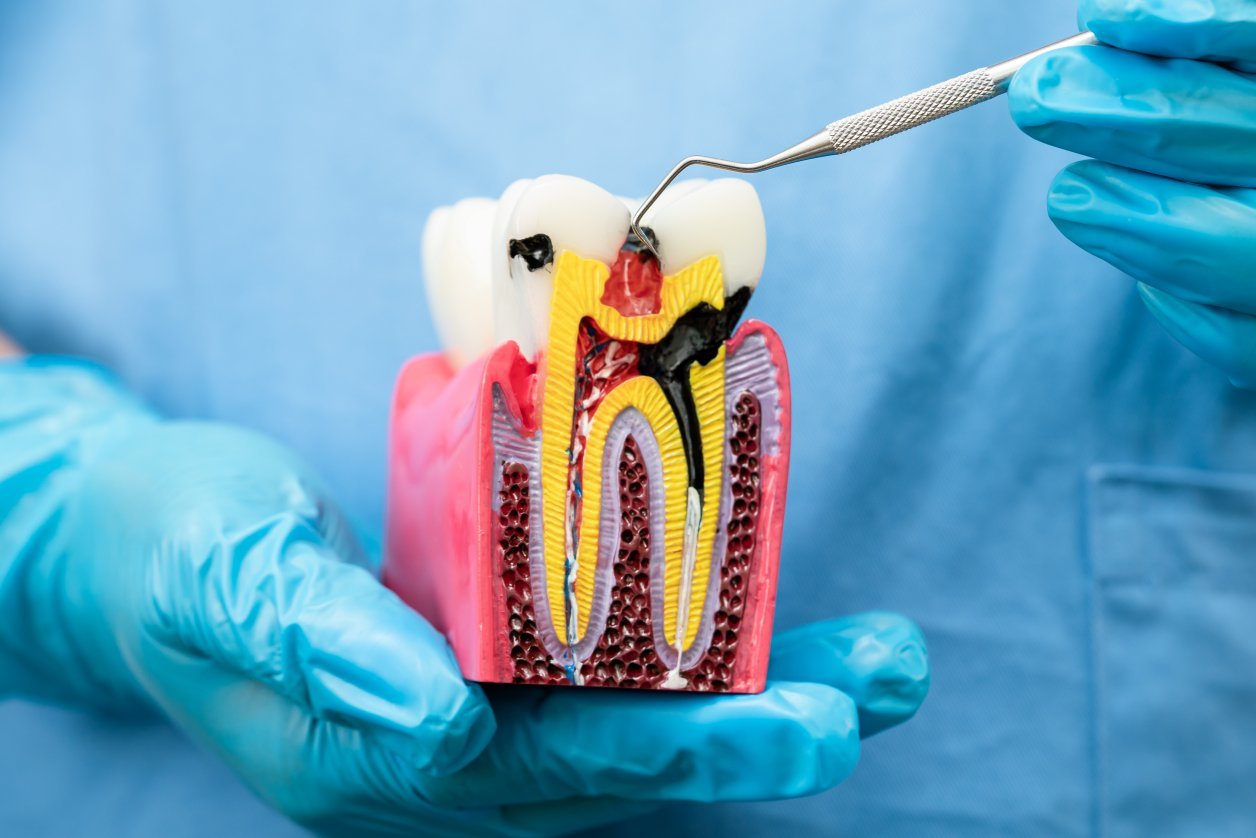Your Partner in Dental Wellness
Painless Root Canal Treatment: 5 Essential Benefits & Recovery Tips

What is Root Canal Treatment?
Root canal treatment is a highly effective dental procedure designed to save a severely infected or damaged tooth. It involves removing the infected pulp, cleaning the root canals, and sealing them to prevent further infection. This treatment is crucial for preserving the natural tooth, preventing extractions, and eliminating pain caused by deep cavities, trauma, or bacterial infections.
Root canal treatment is a dental procedure used to treat infection or damage within the tooth’s pulp. This treatment helps save the natural tooth, prevent further decay, and eliminate pain caused by deep cavities or trauma. According to the American Dental Association (ADA), root canal therapy is a safe and effective way to preserve your natural teeth.
Signs You May Need a Root Canal
If you experience any of the following symptoms, you might need a root canal:
- Persistent Toothache: Continuous pain, especially when chewing or applying pressure.
- Sensitivity to Hot or Cold: Lingering discomfort after consuming hot or cold foods.
- Swollen or Tender Gums: Inflammation around the affected tooth.
- Darkened or Discolored Tooth: Indicating pulp damage or decay.
- Pimple-Like Bumps on the Gums: A sign of an abscess or severe infection.


Understanding the Root Canal Procedure
Root canal treatment is a multi-step process that ensures complete removal of infection while preserving the tooth’s structure. Here’s what to expect:
- Diagnosis and X-ray : The dentist examines the tooth and takes X-rays to assess the extent of the infection and determine the best treatment plan.
- Local Anesthesia : A numbing agent is applied to ensure the procedure is painless. Modern anesthesia makes root canal treatments as comfortable as a regular filling.
- Removing Infected Pulp : A small opening is made in the tooth to remove the damaged pulp. The root canals are thoroughly cleaned and disinfected to eliminate bacteria.
- Filling and Sealing : The empty root canals are filled with a biocompatible material called gutta-percha to prevent future infections. The tooth is then sealed to restore its structure.
- Crown Placement : A custom-made crown is placed over the treated tooth to strengthen and protect it from damage, ensuring long-term functionality.
For a more in-depth look at the procedure, you can visit SN CLINIC for expert insights.
Benefits of Root Canal Treatment
Root canal treatment offers numerous advantages, making it the best solution for saving a damaged tooth:- Pain Relief: Eliminates severe toothache and discomfort.
- Prevents Extraction: Saves the natural tooth, avoiding the need for artificial replacements.
- Restores Functionality: Enables normal biting, chewing, and speaking.
- Stops Infection Spread: Prevents bacteria from reaching surrounding teeth and gums.
- Enhances Oral Health: Reduces the risk of further dental issues caused by untreated infections.
According to WebMD, root canals have a high success rate and can last a lifetime with proper care.
Aftercare Tips for a Successful Recovery
Following a root canal, proper aftercare is essential for a smooth recovery and long-term success:- Avoid Hard Foods: Stick to soft foods until the permanent crown is placed.
- Maintain Oral Hygiene: Brush and floss regularly to prevent future infections.
- Attend Follow-Up Appointments: Visit your dentist to ensure proper healing and placement of the crown.
- Take Prescribed Medications: If needed, use pain relievers or antibiotics as directed by your dentist.
- Watch for Any Issues: Contact your dentist if you experience prolonged pain, swelling, or unusual symptoms.
For further guidance, check out National Institute of Dental and Craniofacial Research (NIDCR) for aftercare recommendations.
Frequently Asked Questions
- Is root canal treatment painful? No, thanks to modern anesthesia and advanced techniques, the procedure is virtually painless.
- How long does a root canal last? With proper care, a root canal-treated tooth can last a lifetime.
- Can I eat after the procedure? Yes, but it’s best to wait until the numbness wears off and avoid chewing on the treated tooth until the final restoration is completed.



